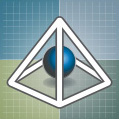Golf Ball Intrusion Probability Study
FOR HOMEOWNERS and PROPERTY OWNERS
Errant golf balls can cause serious safety issues for homeowners and other properties adjacent to golf courses. Danger to occupants and threat of injury occurs in proximity to municipal courses, country clubs, and golf communities alike. Risks also apply to neighboring businesses with additional concern for general public safety. Continuous property damage adversely affects insurance rates, while ongoing danger significantly lowers property value.
A major reason for increasing risks associated with errant golf balls is the advancement in golf club design and golf ball technology over the past 30 years. New designs and materials in golf equipment enable players to hit farther than ever before. Increasing physical strength also generates higher swing speeds and longer tee shots.
Some players do not appreciate the danger associated with hitting golf balls near homes. Some get caught up in the challenge of sport to improve their score by taking greater risks. Meanwhile, no matter how good the player, every golfer occasionally hits errant shots. Consequently, drives that once may have rolled up to fences are now flying into your pool or bombarding your deck. Golf balls that once landed outside of the property line are now striking your roof or crashing through living room windows.
Most golf courses were designed over 30 years ago when the average tee shot flew significantly shorter. According to the USGA and R&A, the average driving distance for amateur male players increased 19 yards from 1996 to 2019. Meanwhile, the layout of existing golf courses remained virtually the same. Today, we see safety issues when players hit out of bounds farther than before, attempt to cut doglegs and fly over homes, or avoid laying up toward greens for a chance at birdie.
Other causes of errant golf ball danger result from course renovations after old trees and landscaping are removed to reduce water consumption and maintenance cost. Additional factors arise when new houses are built around existing golf courses or new golf courses are built around existing homes.
Michael S. Johnstone, AIA, is a golf course architect and forensic architect who has guided homeowners, golf courses, and attorneys in lawsuits and negotiations about errant golf balls for 30 years. Our firm has performed golf ball trajectory studies and safety evaluations across the United States. Backed by this analysis, a property owner is better equipped to enter discussions to achieve a mutual solution over safety risks. If your own negotiation should fail, Michael may be retained to testify as an expert witness.
If you are in need of an Errant Golf Ball Safety Evaluation, please contact us here or call (828)-606-6063.


